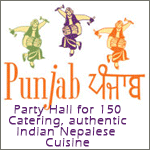How the world eats - how does Nepali diet compare to the worlds?
--------------------------
Week of food
United States - $341 for a family of 4, almost all processed food. Very little non processed whole food. Notice the colorful packaging and marketing.
Germany $500, little processed food
Japan $312, fish heavy, lot of packaging,
Italy $260, Whole foods,
Mexico - $189, coke heavy, sugary
Poland - $151, half processed food, half whole,
Egypt - $68 for family of 12, All vegeetables
Ecuador - $31, family of 9, all wholefoods,
Bhutan $5.03 for a family of 12, non processed food. Rice heavy diet, citrus.
Chad - $1.03 for a family of 6, Starch heavy, no nutrition
How do you think the Nepali diet compares with the world's diet? How much does the average Nepali family spend in a week for groceries?

thanks for the video bro...but that woman is full of you know what in her knowledge or her message...not all family eat the same way in all the every different countries, her discussion in not even in general. Comparing the richest to the poorest, i mean, rich family in Germany vs the poor family in Chad, Im pretty sure the rich in Chad, Mexico, Bhutan etc etc eats well too. She call the all Mexican family overweight????? but one kid was pretty thin....they looked healthy to me. She pointed out that Japanese people exported those packages "WRONG", and the Italain family with all those bread...what about all those carbs??? may be she is referring to a book but still I dont agree with her...................
as for Nepali diet....we eat mostly whole foods and less processed foods......but again....I cant compare because many Nepalese in the poor general cant feed them selves right. AND those who can afford eat a variety of diets where those who cant afford stick with daal bhat taarkari, occasional masu, momo, sekuwa etc etc snack food.
Here is a market price analysis.
Assume that a Nepalese family eats Nepalese food (Daal, Vaat, Tarkari) for US $ 5.00 a week in Nepal.
If the same size family eats the exactly same food and same quantity in USA it will cost more US $ 341.00 a week which you mentioned above.
So, you do the math and market analysis. You simply can not convert the currency. You have to do market value analysis.
MeroJageer,
I think the purpose of the article (and the video) was more to compare 'healthy eating' between nations than to compare the money spent between nations. I think the point of the article and video was to show that just because you are in a richer nation does not automatically mean that you are eating a healthier diet. I thought the article was insightful in that way.
Nepal is a very poor country if you compare it to the United States. But, in terms of quality, as long as people get enough to eat, it turns out that the Nepali diet is proportionately healthier than many rich nations.
Having said that, I do agree with the point you made about market price analysis.

I was like "hahaha.." when I read Merojageer's comment.
Pais babu nepal ma ""Nepalese food (Daal, Vaat, Tarkari) for US $ 5.00 a week"".
The household expenditure in Nepal has risen enormously.
I estimate that the food expenses for 4 adult member family in Kathmandu valley is around Nrs 15,000. so thats nearly 200 Dollars/ month i.e $50/week. yeh! just eating bihan, deusu and beluka Nepali style food. Outside Kathmandu it may vary from Nrs 5000-12000, my estimate.
I further went like" hahaha .."when I read "If the same size family eats the exactly same food and same quantity in USA it will cost more US $ 341.00 a week which you mentioned above."
I beleive, most Nepali living in states don't spend as much as the natives do, in food for sure. May be same for rent, communications, fuel, insurance...but not for food.
I feel that may be they spend 50-75% of the natives in food.
So, I will do the maths for you. The average food expense for same Nepali family living in US will be around 200-250$.
That's similar as living in Kathmandu.
I am strictly talking about food here.

I have to agree with the Korean dude above. Food is pretty darn cheap in the USA.
You can get chicken for less than a dollar per pound, which is equal to $2 or Nepali Rs. 140 per Kilogram. I think that is about the same or even less than price of chicken in Kathmandu.
The other day I bought 25 pound sack of Jasmine rice for $15 at Costco. So that would come to about $1.30 per Kilo or in Nepali 92 rupees. That is probably not much higher than in Nepal, I think, no?
I don't buy much corn, but if you look at the vast corn fields in midwest, I bet it is cheaper in the US than in Nepal.
Now veggies are much more expensive in the US for sure. At a local grocery store, I paid $2 for one small bunch of watercress. Imagine paying 142 rupees for teeny weeny bittaa of sim-rayo saag in Nepal.
I believe the key factor to determine any nation's poverty, or prosperity for that matter, is the ratio of food expense vs total income.
I believe, in Nepal, people spend more than 50%, even 75%, of their income on food just because food is so expensive in relative terms. Compare that to the US where Americans spend only 5% to 15% of their income on groceries. I am intentionally not accounting for "going-to-restaurants" expenditure because that can be closely associated with entertainment and can askew the study vastly.
What do you think?

Riten,
What part of the US can you get chicken at .50/pound? But yeah, I agree with what you and Korean_Soju said. 2.2 lbs(1 Kilo) of goat meat costs 500 rupees, that's freaking 6 bucks!
I don't really know how much Nepalese spend in groceries but I bet we spend more than 45% of our income on groceries itself. There's absolutely no comparison between the spending of Nepalese to that of an American. Like has already been said, Groceries cost much cheaper over here.
There's one down side of the way Nepalese eat though. Nepalese eat too much carbs and very little protein which helps you explain why Nepalese are almost unmuscular while every dude who loves to eat has a pot-belly. White is a massive NO NO. Anything white - Sugar, White Bread, White Flour will spike your blood sugar level and a sudden decline results in you gaining weight significantly.
But that said, if you were to choose healthier food (like Whole Grain, Wheat, Brown rice) along with lean protein in every meal(via turkey, lentils(daal), beans etc), you can have a good body by eating food that costs so less when you compare it to the costs of same food in Nepal.

Food is cheaper in US than rest of the world if you do a real compare. Most people living outside the cities grow some in their own yard and that is the lifestyle we have.
Freshly cooked foods are healthier than processed food and there is no second opinion. What you cooking it may not have enough nutrients.
People hate eastern culture and say we are weird but it is healtheir. There are many positive side of eating by hands but hand must be well washed.
1) Brain gets various signals to its sensors touchig the food.
2) You feel the food and brain analysis simultaneously along with its aroma.
3) You play with food, it is like the baby playing with mom's boobs or nipple (it satisfies him / her, not trying to be nasty or sexual), brains trends to satisfy little bit.
4) The size of bite is another factor and how fast you are eating.
5) People tend to take more time while using hand than utensils.
Yes, in modern society use of hand is nomadic but it has its own beauty. And we need western to stamp.
Please log in to reply to this post
You can also log in using your Facebook

You might like these other discussions...








